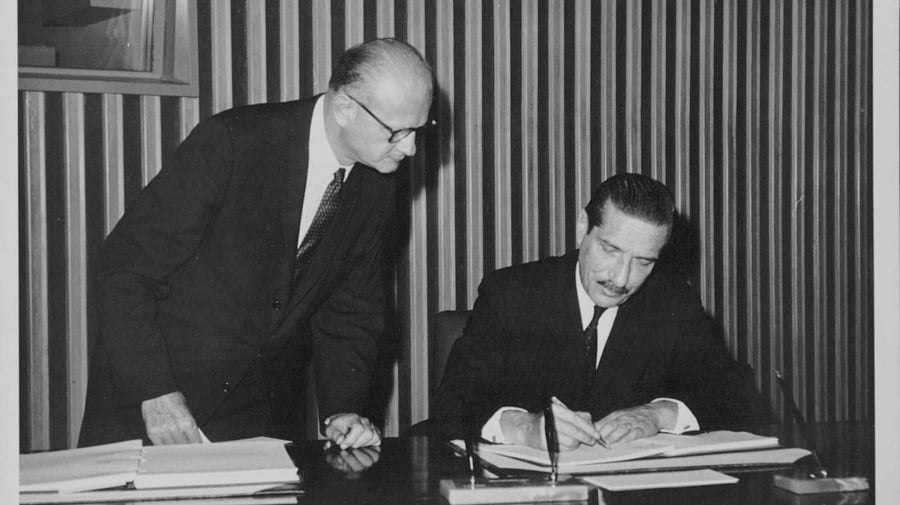UN Conventions on Statelessness
UN Conventions on Statelessness

Dr. Mario Amadeo of Argentina signs the final act of the conference during which the "Convention on the Reduction of Statelessness" was drafted.
Countries decide who their nationals are, setting laws and policies that determine who is a citizen and how nationality is conferred. However, stateless people are not recognized as citizens by any country, even the country they were born in. Without a nationality, they are often unable to access basic rights and services, such as enrolling in school, opening a bank account, accessing medical care, or travelling within or outside of the country where they live.
The 1954 Convention relating to the Status of Stateless Persons and the 1961 Convention on the Reduction of Statelessness are the key international conventions that address statelessness. UNHCR advocates with and encourages countries to sign both statelessness conventions and bring their laws and policies in line with the instruments. By doing so, nations commit to uphold the principles enshrined in the conventions.
The 1954 Convention relating to the Status of Stateless Persons
The 1954 Convention helps ensure stateless people can live in security and dignity until their situation is resolved.
It establishes the legal definition of a "stateless person" as someone who is "not considered as a national by any State under the operation of its law". It also outlines the minimum set of human rights that stateless people are entitled to. These include, but are not limited to, the right to education, employment and housing. Importantly, the 1954 Convention also guarantees stateless people a right to identity, travel documents and administrative assistance.
The 1961 Convention on the Reduction of Statelessness
The 1961 Convention aims to prevent statelessness and reduce it over time.
It outlines a series of measures that States and the international community should take to provide a nationality to people who are currently stateless, and to prevent new cases of statelessness from occurring. It requires that States establish safeguards in their nationality laws to prevent statelessness at birth and later in life. Critically, it establishes that children are to acquire the nationality of the country in which they are born if they cannot acquire any other nationality.
Ending statelessness
UNHCR is working to identify, prevent and reduce statelessness, while also protecting people who are currently stateless.
